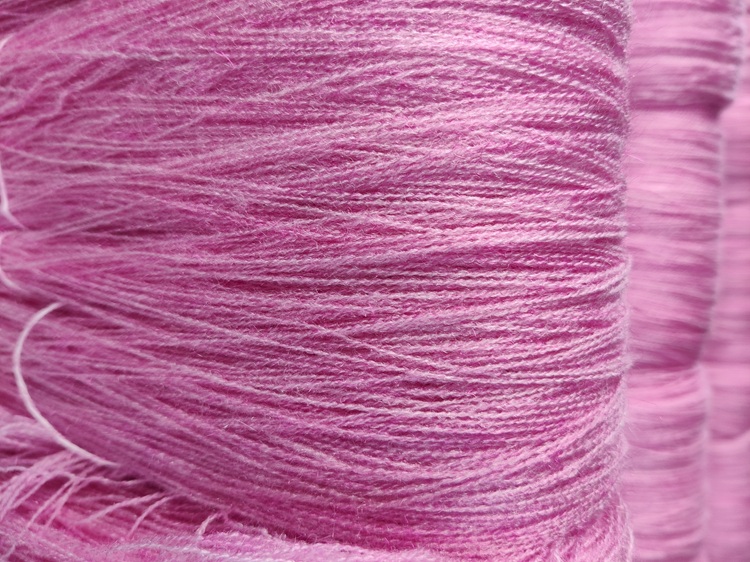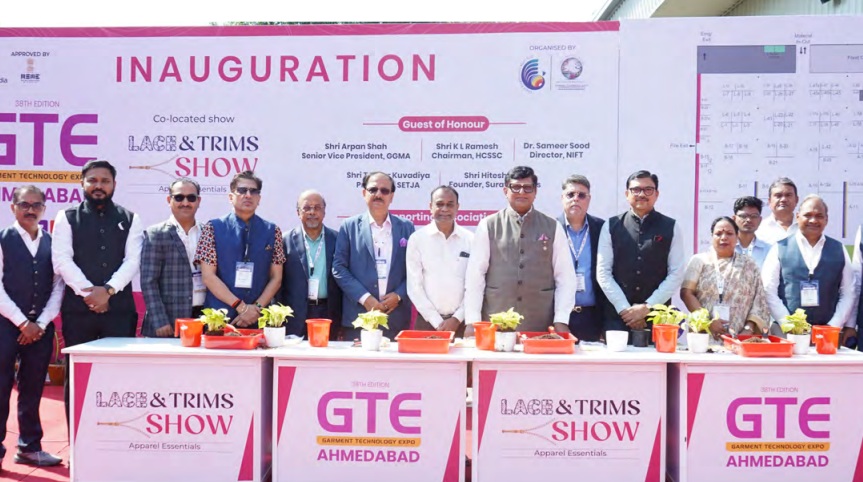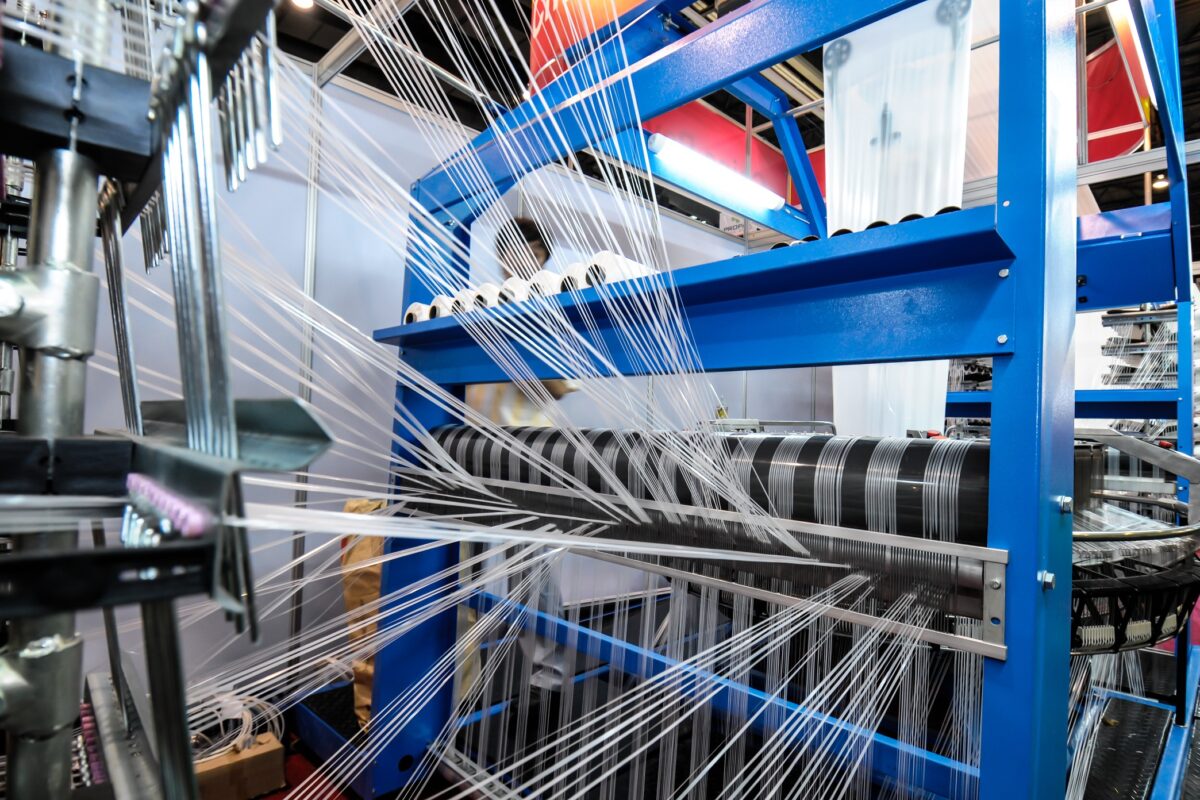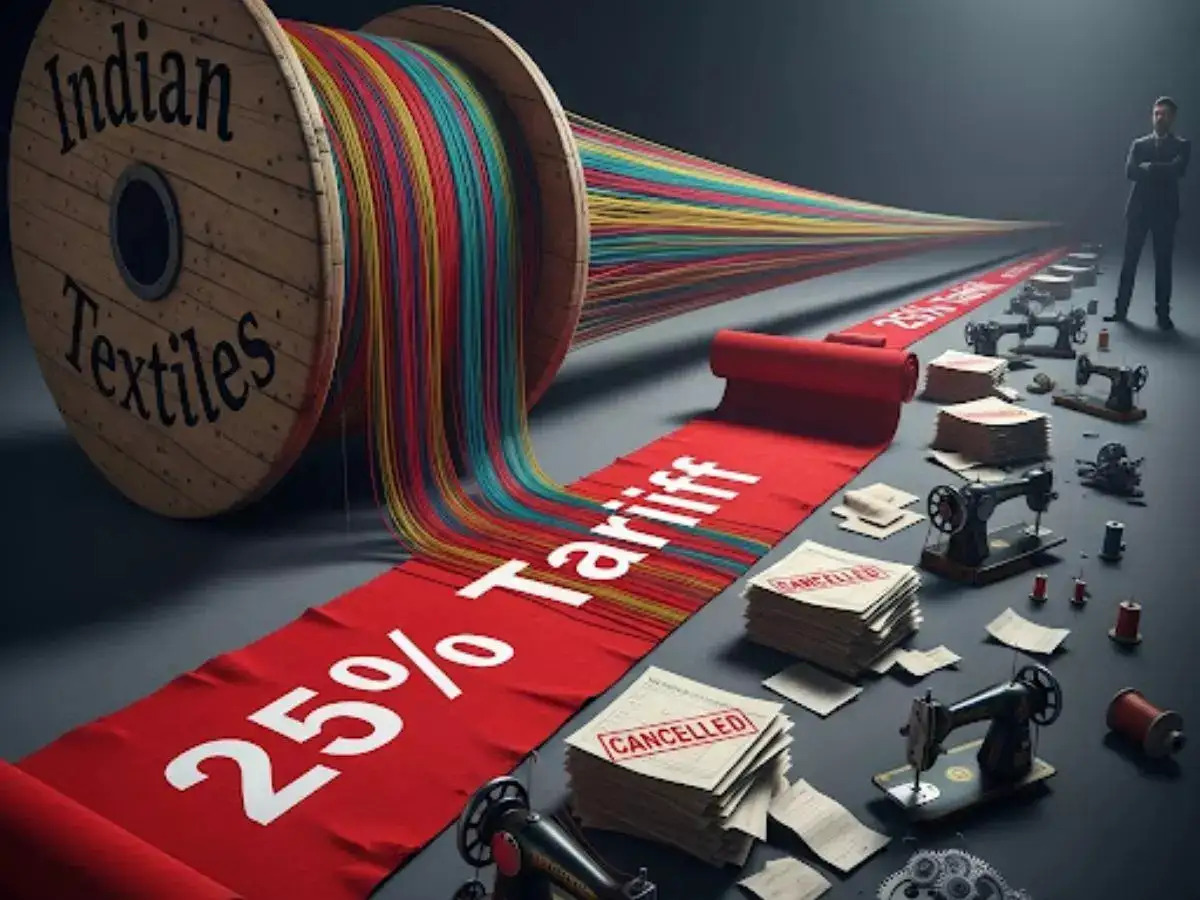FW
Sutlej Textiles and Industries is a one‐stop‐shop for all kinds of spun dyed yarn from natural to manmade fibers. Sutlej is one of the largest manufacturers of value added melange yarn in India. For financial year ’16, yarn contributed 96 per cent to revenues and home textiles contributed four per cent.
The company entered home textiles in 2006. It is gradually expanding its capacity in the home textile segment to 9.6 million meters per annum from six million meters at the end of financial year ’16. The segment will contribute Rs 225 crores at full capacity with 20 to 25 per cent EBIDTA margins. The company will spend Rs 350 crores over the next two years on expansion and modernization at existing plants.
Expansion plans for its Rajasthan facility are on track and will be commissioned by the fourth quarter of financial year ’17. The company will spend Rs 270 crores with an expected payback period of four to five years.
Sutlej has 3, 77,688 spindles for yarn manufacturing located at Jammu and Kashmir, Rajasthan and Himachal Pradesh. It has the capacity to manufacture single-ply, double-ply and multi ply grindle, roving grindle core spun, slub and other fancy yarns.
A survey conducted in Bangladesh shows, Alliance has given passing grades to factories that are yet to implement life-saving safety changes the retailers had pledged to put in place following Rana Plaza factory’s collapse in 2013 that killed 1,137 people.
The fatal collapse highlighted the hazardous working conditions in Bangladesh’s garment industry and prompted promises of change from retailers including Gap, H&M, Walmart and others. Three and a half years after the building collapse, it has been concluded that the factories that provide clothing materials to some of the biggest names in retail have so far failed to implement key renovations by their own mandated deadlines.
The report has come to a conclusion that in some cases, once firm deadlines for repairs and improvements set for 2014 and 2015 were scrapped and later replaced with a 2018 deadline that coincides with the end of the Alliance arrangement. However, the Alliance disputed the findings saying it relied on inaccurate and outdated information.
Alliance has not published detailed reports of its progress. The new report, titled ‘Dangerous Delays on Worker Safety’, was compiled by the International Labour Rights Forum, the Worker Rights Consortium, the Clean Clothes Campaign and the Maquila Solidarity Network.
Israel headquartered Nilit, known for producing polyamide 6.6, will be showcasing its Nilit Innergy Sport and the new Nilit ATS nylon 6.6 yarns at the upcoming Sports Gear Sourcing Days show, to be held at the Espace Rencontre in Annecy-le-Vieux, France on December 6 and 7.
Nilit Innergy Sport nylon 6.6 yarn is designed to capture body heat and reflect it back to the body as FIR (Far Infrared Rays) to gently and deeply warm and invigorate muscles. A naturally occurring mineral incorporated into the fibres converts the thermal energy and generates the FIR emissions. Tests at an independent laboratory have confirmed that Nilit Innergy Sport increases oxygen levels in the blood, reduces lactic acid build up in muscles, and relieves muscle fatigue, discomfort, and tension, the company reports.
All these lead to greater comfort and better athletic performance. In addition, Nilit Innergy Sport nylon yarn is durable, stays fresh, and protects from UV radiation making it the perfect choice for both outdoor and indoor athletic wear, according to the manufacturer.
Another innovation from Nilit is the new Air Textured Soft (ATS) special air jet texturing technology. This technology makes Nilit performance nylon yarns light, airy, and soft. They are also said to dry faster and be more durable with longer-lasting suppleness.
Nilit’s ATS technology has instilled extra softness and strength into many of Nilit’s performance yarns. Nilit Heat with natural thermal insulation, Nilit Breeze with cooling plus UV protection, Nilit Aquarius with moisture management, and Nilit Body fresh with antimicrobial protection are all softer and stronger than before.
India is look at Trump’s announcement of dumping TPP in a positive light. Since India was not a part of TPP, it could have suffered some diversion of trade with the US and other member countries as TPP countries alone contribute to nearly half of world’s total trade share. The US being India’s second biggest trade partner and the single biggest export destination accounts for over 15 per cent of India’s exports (in value terms) with pearls and gemstones, textiles and apparel and pharmaceutical products being the top items of export. India exported goods worth Rs 2.6 lakh crore to the US in 2015-16. TPP could have been a serious cause for India’s fall in trade with the US.
The TPP is a trade and investment agreement between the US, Japan, Malaysia, Vietnam, Singapore, Brunei, Australia, New Zealand, Canada, Mexico, Chile and Peru. India is not part of the TPP. These 12 countries together cover 40% of the world's economy. Said to be the mother of all trade agreements, the TPP was criticised and opposed by civil society groups for over seven years now. The agreement was also opposed because of the secrecy surrounding its negotiations that would have impacted the health, environment and labour of the countries involved.
The European Bioplastics Conference will be held in Germany, November 28 and 30, 2016. This is an international conference dedicated to bio plastics. Stakeholders in bio plastics segment will get acquainted with the latest global bio plastics market developments, regulatory changes, and material and product innovations, and network with hundreds of like-minded peers.
The event attracts more than 350 senior bio plastics decision makers from across the bio plastics value chain, policy bodies, NGOs, and brand owners. Bio-based alternative products manufactured from renewable resources can have advanced technical properties and functionality compared to their petroleum-based counterparts.
European Bioplastics is the association representing the interests of the bio plastics industry along the entire value chain in Europe. Its members produce, refine, and distribute bio plastics, such as plastics that are either bio based, biodegradable, or both.
Bio plastics are a major driver in the evolution of plastics and they contribute significantly to a more sustainable society. Bio plastics, including bio-based polyurethanes, are highly complex and sophisticated materials that can help make plastic products more sustainable and continue to develop the many benefits of plastics further.
Due to a growing awareness and demand for sustainable products and their impact on the environment, bio plastics materials are becoming the material of choice for a rapidly growing number of brands and customers around the world.
The most comprehensive show on advanced machineries and commercial solutions for laundry and dry-cleaning industry in Asia ‘Texcare Asia’ will be held in China from September 27 to 29, 2017.
This event is a highly specialised trade fair for modern textile care, catering to manufacturers and suppliers in laundry and dry-cleaning in the textile, fabrics and yarns industry. It features manufacturers of machines, tools and devices for laundry, ironing, dry cleaning and dyeing, owners of laundry chain store and franchises, manufacturers of machines used in cleaning of carpets, floor coverings, upholstery and buildings and plant construction companies as exhibitors.
Texcare will serve as an effective networking and trade platform to assist industry players in capturing new opportunities created for service-related industries, including businesses relying on the use of professional textile care services.
Buyers will be able to explore an array of integrated solutions and the foremost technologies for smarter textile management and energy control presented by leading suppliers in the field. With growing awareness about the significance of energy conservation and environment protection, intelligent and resources-saving concepts are gaining more attention within the industry across Asia.
In 2015, the show attracted 153 exhibitors from 19 countries and regions and set a new record with 10,267 visitors from 54 countries and regions, a 20 per cent increase from the 2013 event.
Taiwan-based Chain Yarn, is a one-stop shop for processes from design, development, polymerization to post-processing. Founded in 1988, Chain Yarn manufactures nylon chips, nylon fibers, nylon yarns and nylon air texturing yarns and offers an extensive range of yarns for textile and general industrial use.
The main focus is on innovative and professional value-added products. The company hopes to associate itself with professional fabric makers and brands around the world to become their strategic partner. The company has the technical experience, knowledge and cutting-edge facilities to supply best quality products to its customer with on-time delivery.
Chain Yarn’s key advantages are in its polymer material research, nano technology research, original process research, development of functional master batch and fiber, eco-friendly fiber research and development of industrial yarn.
The R&D center was set up in 2008 to enhance Chain Yarn’s competitiveness and make products which can conform to the principles of environmental protection and contribute to the industry, economy and society. Based on an excellent management team, professional and advanced technology, talented R&D team, superior facilities, vertical integration process, the best quality of world level, worldwide sales network and perfect tailor-made services, the company has set near, mid and long-term goals to design and innovate continuously, so that it can meet its customers’ varied requirements.
The ministry of commerce and ministry of labour in Cambodia has signed a MoU with the Garment Manufacturers Association of Cambodia (GMAC) and International Labour Organisation’s Better Factories Cambodia (BFC) for a programme to improve working conditions and boost competitiveness in the country’s garment industry.
The MoU has been signed to extend the partnership for three years, from January 2017 to December 2019, during which the partners will collaborate to build institutional sustainability of the programme. With the MoU in force, Cambodia has agreed to contribute approximately 25 per cent to the BFC’s budget over the next three years while international garment buyers sourcing from Cambodia who use the ILO BFC programme assessment reports and factories that participate in BFC training courses will contribute to programme operation based on fees for services rendered.
The BFC program will continue to assess working conditions in garment factories based on Cambodian labour law and internationally recognised core labour standards and to report on its findings publicly by detailing compliance and non-compliance of individual factories. BFC will also work with the Ministry of Labour to implement a joint strategy and action plan with the objective to support government’s capacity and ownership to uphold compliance with labour law and make necessary changes in the garment sector.
BFC is part of the Better Work Program, a collaboration between the ILO and the IFC which operates across three continents to catalyse change along global supply chains in the garment industry, the work of BFC will be an integral part, in the recently signed, Cambodia Decent Work Country Programme. In all, the MoU has been renewed five times by the parties since the ILO BFC programme began in 2001.
Within two weeks ago of 13 workers being killed in a fire at a factory manufacturing leather jackets on the outskirts of New Delhi world’s attention is being drawn by the horrendous working conditions endured by millions of garment workers in various RMG units. Now, in Bengaluru, garment workers are beginning to take a stand.
In a striking example of this growing self-advocacy, work in Bengaluru came to a halt on April this year as a massive protest by thousands of women working in the city’s garment sector blocked arterial roads.
Over 1,200 factories where 90 per cent of the 500,000 workers are women, function on the outskirts of the city. For decades, women have worked in exploitative conditions, earning a minimum monthly wage as low as Rs 4,000. But in a city full of migrant IT workers, their plight was largely ignored until news about an amendment in government rules concerning PF brought them out onto the streets. Not only did the government roll back proposed changes, the strike also brought stories of these women into the mainstream.
A study on occupational health and safety in the garment industry by Cividep, a Bangalore-based NGO on worker’s rights and corporate accountability, has come to the conclusion that the city’s garment workers often suffer from respiratory illnesses, tuberculosis, ergonomic issues like back pain, mental health problems such as depression and anxiety and reproductive health issues such as white discharge, irregular periods and excessive bleeding. Occupational health problems are common amongst workers in the garment industry in other parts of the world as well. Women in the garment sector also have to fight off sexual harassment from male colleagues.
With increase in cotton arrivals in market amidst sagging demand from spinning mills, prices that shot up last week in the wake of government’s bold move at demonetization, have started falling. Daily market arrivals improved to around 1.2 lakh bales (of 170 kg each) from around 80,000 bales last week.
After touching a high of Rs. 41,000 per candy (355 kg), prices have now come down to between Rs 39,000-39,500. Similarly, prices of raw cotton (kapas) have fallen down to between Rs. 4,900-5,000 from Rs. 5,200-5,300 that prevailed last week. Also, cotton seed prices have come down by Rs. 100-150 per quintal to around Rs. 2,200-2,250, trade sources said.












